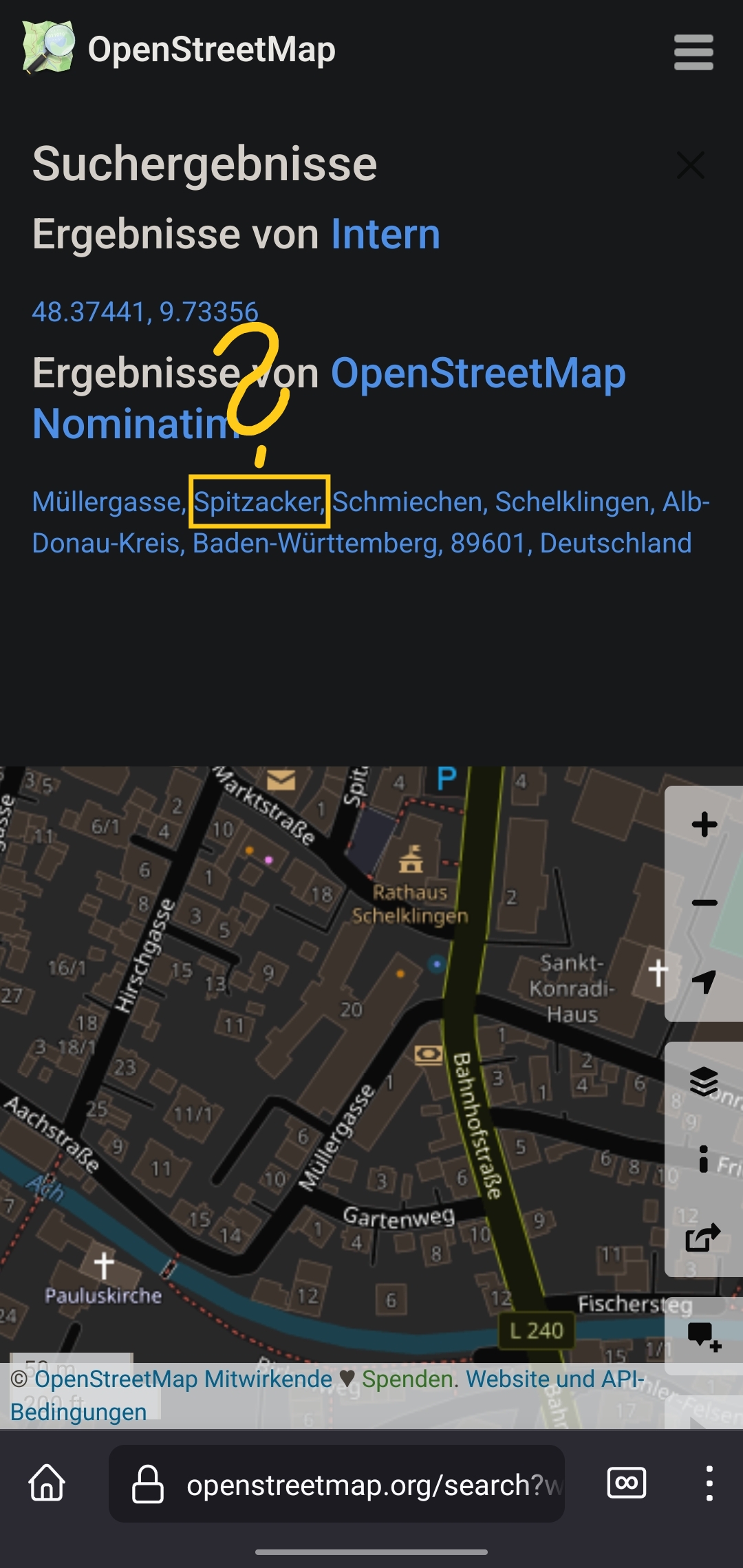this post was submitted on 13 Aug 2023
14 points (100.0% liked)
OpenStreetMap community
4435 readers
31 users here now
Everything #OpenStreetMap related is welcome: software releases, showing of your work, questions about how to tag something, as long as it has to do with OpenStreetMap or OpenStreetMap-related software.
OpenStreetMap is a map of the world, created by people like you and free to use under an open license.
Join OpenStreetMap and start mapping: https://www.openstreetmap.org.
There are many communication channels about OSM, many organized around a certain country or region. Discover them on https://openstreetmap.community
https://mapcomplete.org is an easy-to-use website to view, edit and add points (such as shops, restaurants and others)
https://learnosm.org/en/ has a lot of information for beginners too.
founded 5 years ago
MODERATORS
you are viewing a single comment's thread
view the rest of the comments
view the rest of the comments


@wmrch
Nominatim says 1 Spitzacker is a hamlet represented by node 3441898626 2. I don't know why it would be rank a more distant smaller place above a much closer (omitted) Schelklingen village node 3 unless it's because it's assuming it to be a duplicate of the relation for the area with the same name (which it does catch).
Maybe the relation needs the village as admin center?